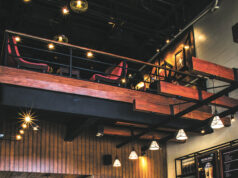Rethinking workspaces for employees’ well-being
Workplaces have been modified through time, from the open office to cubicles to coworking spaces. Much more at this present time have workspaces been rethought and redefined to cater to the overall well-being and productivity of employees, especially those who are yet to enter the workforce.
“Designers are now creating inspirational, fun workplaces which promote health and well-being among users. This has a direct effect on job satisfaction and engenders pride in employees as well,” observed Mustafa Khamash, founder and managing director of luxury design atelier Kart Group, in an article from the Architecture Digest.
Prioritizing the well-being of employees in creating or remodeling workspaces has become a trend in itself. As Office Hub online office space marketplace observed on its web site, enhancing both physical and mental well-being of employees is at the forefront of business owners’ minds, aiming to increase their morale, reduce sick days, and inspire infectious productivity within the workspace.
Another notable trend transforming today’s offices is breakout zones. Created to drive experiences further within the usual work, these breakout zones can be in the form of meditation spaces, yoga studios, rooftop terraces, massage rooms, games areas, and lounges. According to online office space marketplace Office Hub on its web site, breakout areas “create a casual and relaxed environment that is more conducive to conversation, communication and creativity.”
 “Far from fueling distraction, this office design trend tells employees that they’re welcome to bring their true selves to work — the concept that hundreds of coworking spaces harness today — and that they are trusted to be productive even without the confines of a cubicle,” Office Hub added.
“Far from fueling distraction, this office design trend tells employees that they’re welcome to bring their true selves to work — the concept that hundreds of coworking spaces harness today — and that they are trusted to be productive even without the confines of a cubicle,” Office Hub added.
Biophilic design is also another interesting trend in workspace design, which many workplaces are starting to adapt. Coming from the concept of “the human desire to connect with nature and to draw comfort from green spaces”, biophilic design brings nature indoors, as evident in the incorporation of greeneries into offices, be it live walls, landscaped gardens, or indoor plants.
Space Matrix, a design consultancy speacializing in workplace design, said on its web site that biophilic design will be less of a trend and more of a necessity in people-centric workplaces. “Futuristic offices will incorporate greenery right into the architecture of their buildings, and mimic nature as closely as possible when it comes to light, sound, smells and thermal conditions,” it added.
Not only does biophilic design integrate living forms in what used to be apparently concrete areas, but it is also poised to enrich productivity among employees. This was proven by a report by carpet tile manufacturer Interface, Inc., which indicated “an increase of eight percent in productivity and 13% in well-being from those working in offices with natural elements, proving the importance the biophilic trend will have in years to come.”
Characterized by lightweight and easily moveable furniture, wall dividers, and whiteboards on wheels among many others, dynamic space structures are also another way workspaces are being transformed. According to Office Hub, dynamic workspaces “can help minimize build costs, maximize space efficiency of small offices, and keep businesses adaptable to advances in technology.”
“By switching up the monotonous office layout, you can give staff an environment that is always fresh and interesting — which has an incredible effect on idea generation, productivity, and mindset,” it added.
Moreover, aged textures are being favored in today’s sleek workspaces. “Stark minimalism is fast being replaced by earthy touches that give a space a cheerful, lived-in look,” wrote Space Matrix. Examples of these “earthy touches” include wood beams, exposed ducts, handcrafted textiles, carefully curated interior accessories, bespoke furniture, and artisanal products.
Amid the popularity of collaborative and interactive workspaces, there are still professionals who prefer to do their work autonomously on a quiet desk. In fact, a recent report by Office Hub noted that “70% of Australian businesses moving to a shared workspace in 2018 chose a private office over a coworking desk.”
Adding personal touches of home is also another interesting way of reinventing workspaces. This is characterized by features such as wide-screen televisions, fridges, softer lighting, and comfier sofas. “Homestyle characteristics are already the DNA of the world’s most cutting-edge coworking spaces — in 2019, it will translate more to conventional office design,” noted the office space web site. — Adrian Paul B. Conoza



